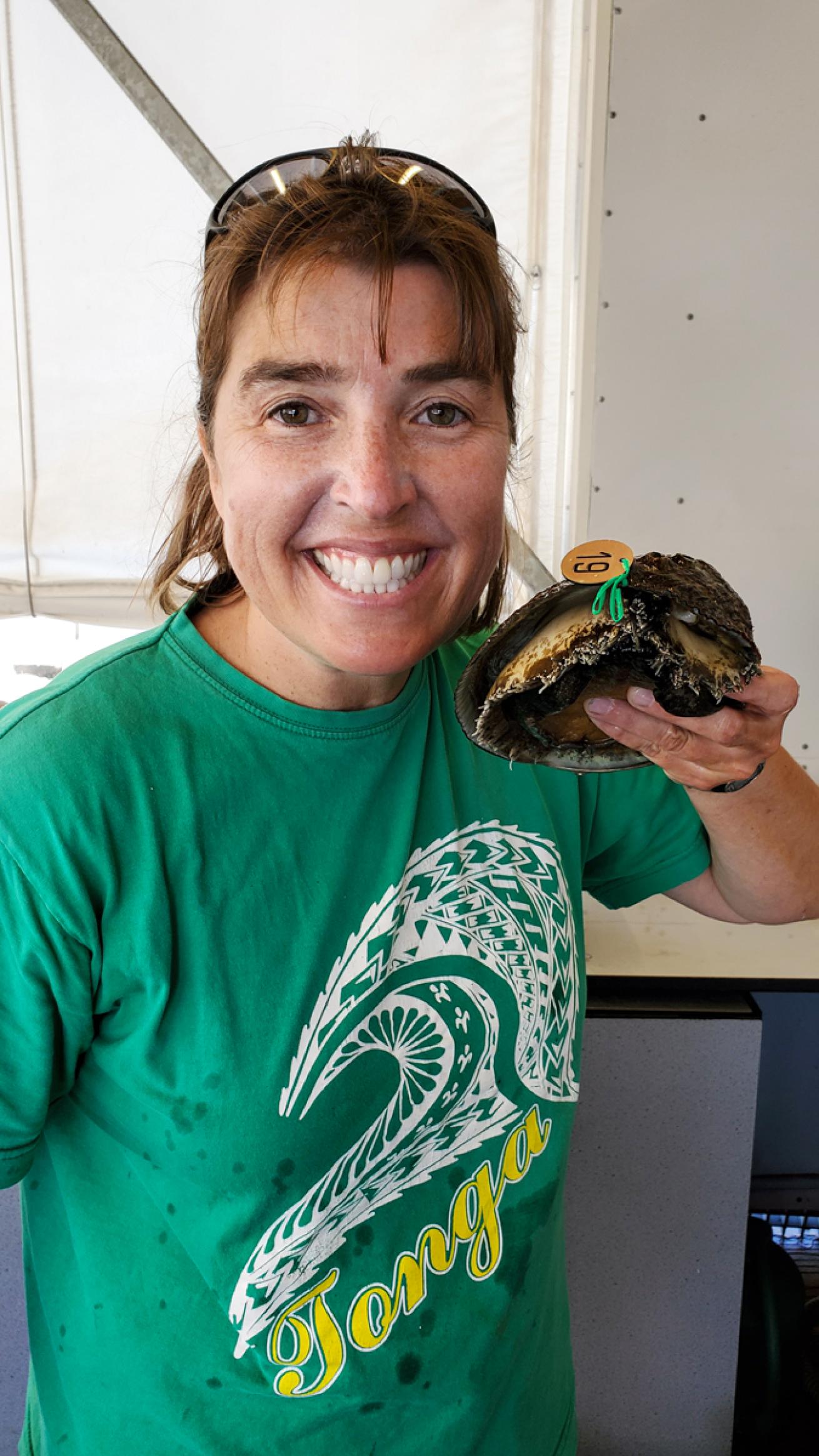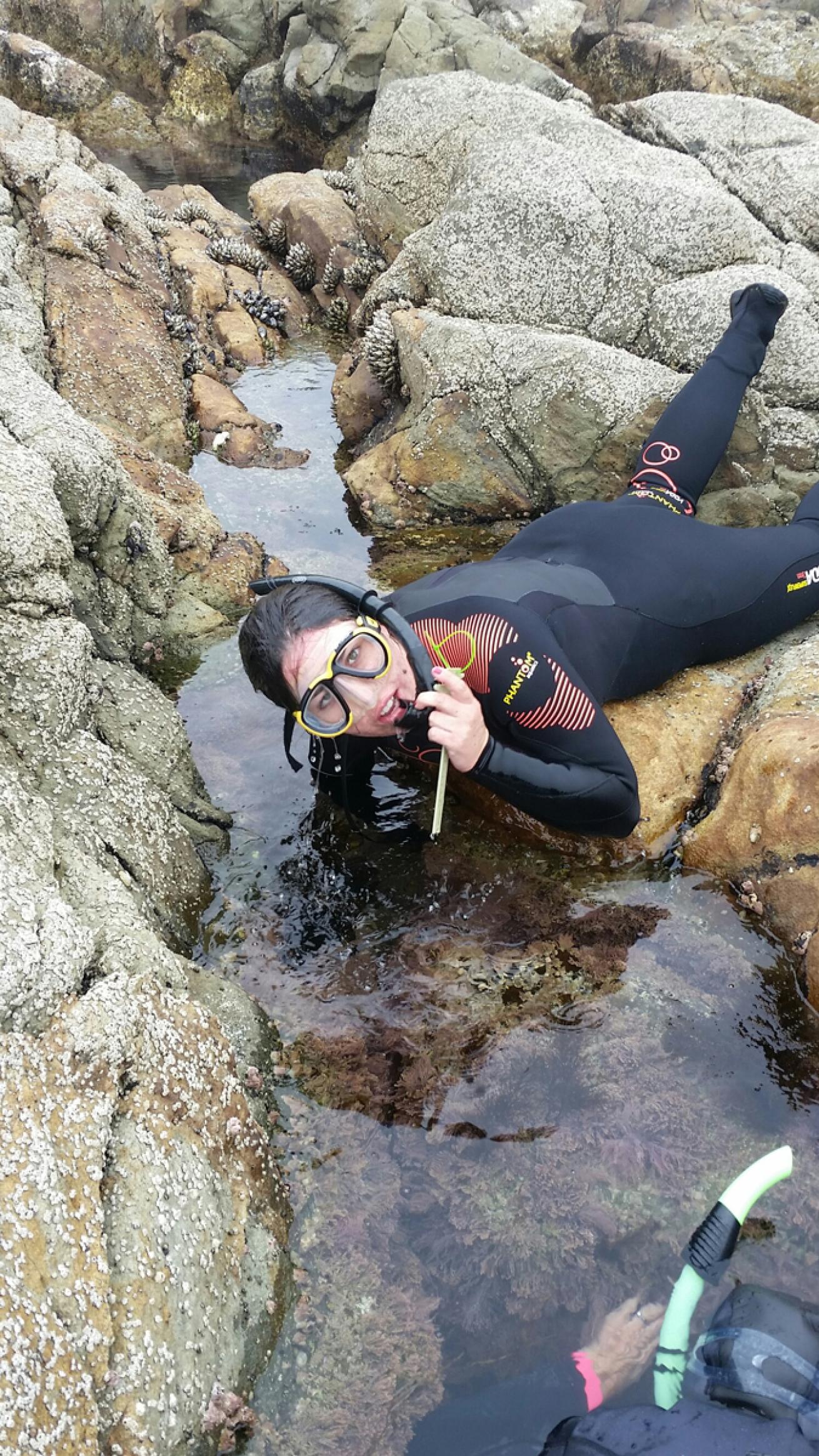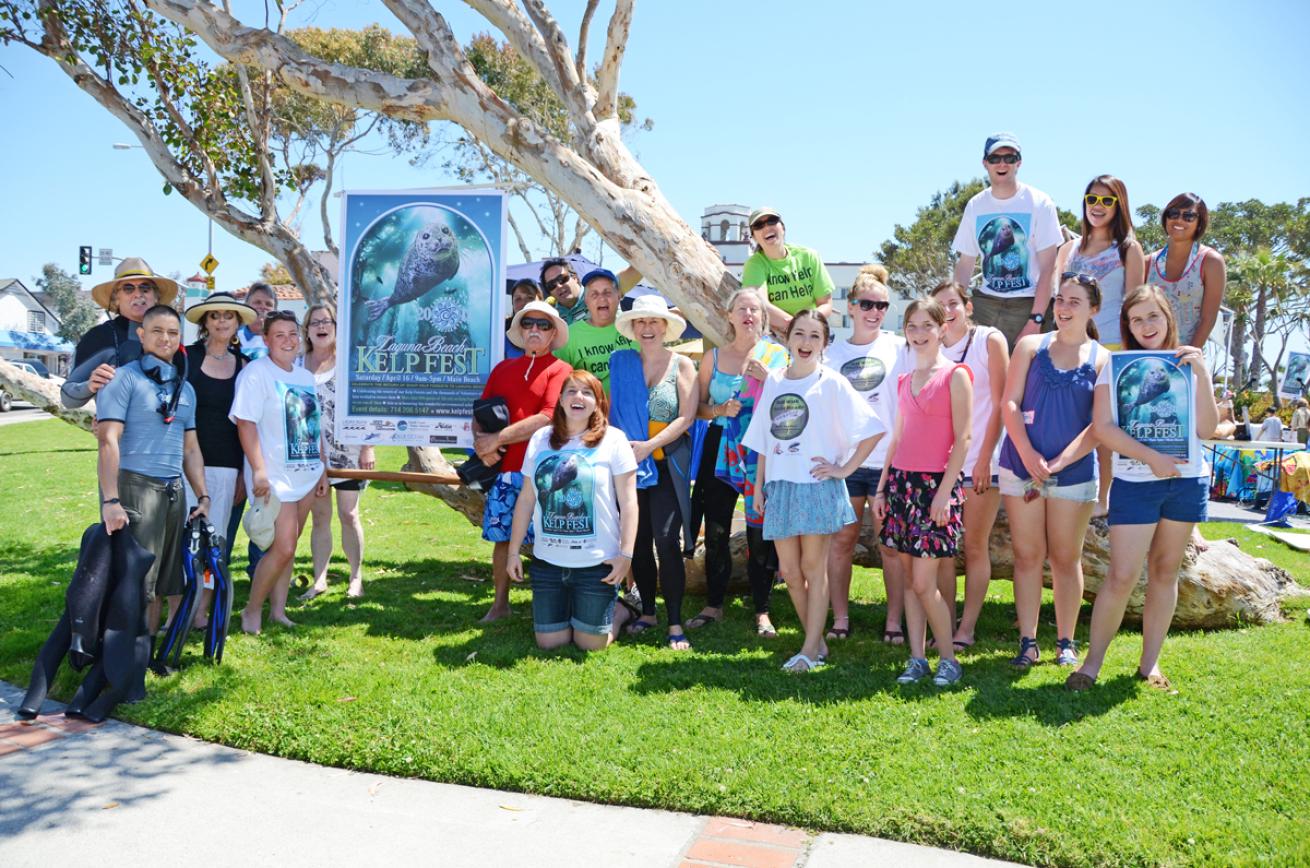Nancy Caruso Named Sea Hero for Dedication to Ocean Restoration Work
Year Dive Certified: 1988
Age When Certified: 16
Dive Certification Level: Divemaster
Get Inspired Website: www.GetInspiredinc.org
Words To Live By: “Never doubt that a small group of thoughtful, committed citizens can change the world. Indeed, it is the only thing that ever has.”—Margaret Mead

Nancy CarusoA portrait of Nancy Caruso.
When a federally funded kelp-restoration project was shut down and marine biologist Nancy Caruso failed to get support from two other nonprofits, Caruso took matters into her own hands, founding Get Inspired (getinspiredinc.org) to continue kelp restoration work in Orange County, California. Caruso and her team of volunteers successfully grew, transplanted and outplanted kelp. The transplant sites flourished to the point that Caruso and her team of volunteers, including 5,000 schoolchildren, shifted their focus to restoring other species that live along the coast, such as green abalone, white seabass and Pismo clams. For her dedication, many talents and passion for restoring species in her local community, Nancy Caruso is our March Sea Hero.
Q: You founded Get Inspired to restore kelp forests in Orange County. When did you shift your work to restoring coastal species in the area?
A: After planting thousands of baby kelp and removing over a million sea urchins from 2002 to 2012, we were successful at restoring the kelp forests of Orange County, which had been gone for more than 20 years. Once the kelp was healthy, we started working on other species that needed help, using the same classroom model we used for kelp, to teach kids to grow the species we were restoring. I am currently working on restoring green abalone, white seabass, and Pismo clams.

Nancy CarusoA Get Inspired volunteer surveys a tide pool for baby green abalone.
Q: How does Get Inspired partner with local schools? What are the benefits of enlisting the help of schoolchildren with your restoration projects?
A: When I moved to Southern California in 1997, I was amazed at how little students knew about their connection to our ocean habitats. I believed that engaging kids had to be part of our programs from day one. It didn’t take long until the students in our programs were advising their parents about how their daily lives affect “their” ocean, which included the impacts of trash and urban runoff. I have been fortunate to work with brilliant and enthusiastic teachers who understand the importance of ocean education. It is their passion that has helped to fuel the momentum in changing students’ lives. The students are responsible for taking care of different species in their classrooms, from kelp to abalone to white seabass. I have taught over 12,000 kids in the last 20 years, and I am proud to say that a few have even gone on to become fellow marine biologists.
Q: You set a goal to release 10,000 abalones by the end of 2024. How is that going?
A: Over the last seven years, we have successfully spawned and grown 5,000 abalone and hope to start releasing them this year. We grew abalone in cohorts from 2016 to 2021. The 7-year-olds are 10 centimeters in length and ready to be outplanted. That’s a good size since there are not many predators that eat abalone that size. The youngest abalone are about 2.5 centimeters in length and should be ready for outplanting in a few more years. My biggest obstacle will be getting permits from the California Department of Fish and Wildlife.
Q: How can divers outside of California become involved with Get Inspired?
A: We have trained over 250 volunteer divers to help with our projects. We do surveys on the beach looking for Pismo clams, tide pool surveys looking for abalone, and scuba diving to survey the kelp. Perhaps the greatest impact divers can make in my projects is to write letters and make phone calls to the California Department of Fish and Wildlife to support my restoration efforts. Public support was critical in getting my previous abalone permits issued.

Tom CarusoCaruso co-founded Kelp Fest in 2010 to celebrate the return of long-absent kelp forests to Laguna Beach, California.
Q: What do you view as the greatest challenges in marine conservation today? How are these challenges reflected in your own work?
A: Our greatest challenges involve changing our paradigms around the idea that the ocean is only for extraction. In California, our laws and rules are created for the purpose of taking things out of the ocean, not for restoring things in the ocean. You can get a fishing license online in less than two minutes and be allowed to take things from the ocean every day!
It takes lots of time, money and permits to restore things in the ocean. For example, I had to get seven different government permits to restore the kelp forests. One of the permits came from the State Lands Commission. They required that I lease the land (underwater) from the state of California to plant the kelp on. Simply put, not many people do species restoration because it’s very hard to get permits. If we want our young people and their children to love and protect the ocean, then the ocean can’t be just for extraction and there must be a pathway for us to do the restoration. Please tell your legislators!
Q: What’s been your most surprising moment?
A: Although we were all hopeful that kelp restoration was going to work, we were surprised to actually see it happen. It took a long time to figure out how to grow the kelp and to remove all the ur-chins. When we finally started planting the 3-millimeter-tall plants, they grew fast, reaching 12 inches tall in a week. But for a couple of years, the kelp barely reached 10 to 15 feet in height. Then finally, La Niña conditions occurred in the Pacific in 2011 to 2012 and it grew like gangbusters! Seeing the kelp finally reach the surface of the ocean and form canopies was what we had hoped for. We had a party to celebrate.
Each Sea Hero featured in Scuba Diving receives a Seiko SRPD43 watch valued at $525. For our January issue, judges select a Sea Hero of the Year, who receives a $5,000 cash award from Seiko to further their work. Nominate a sea hero at scubadiving.com/seaheroes.










